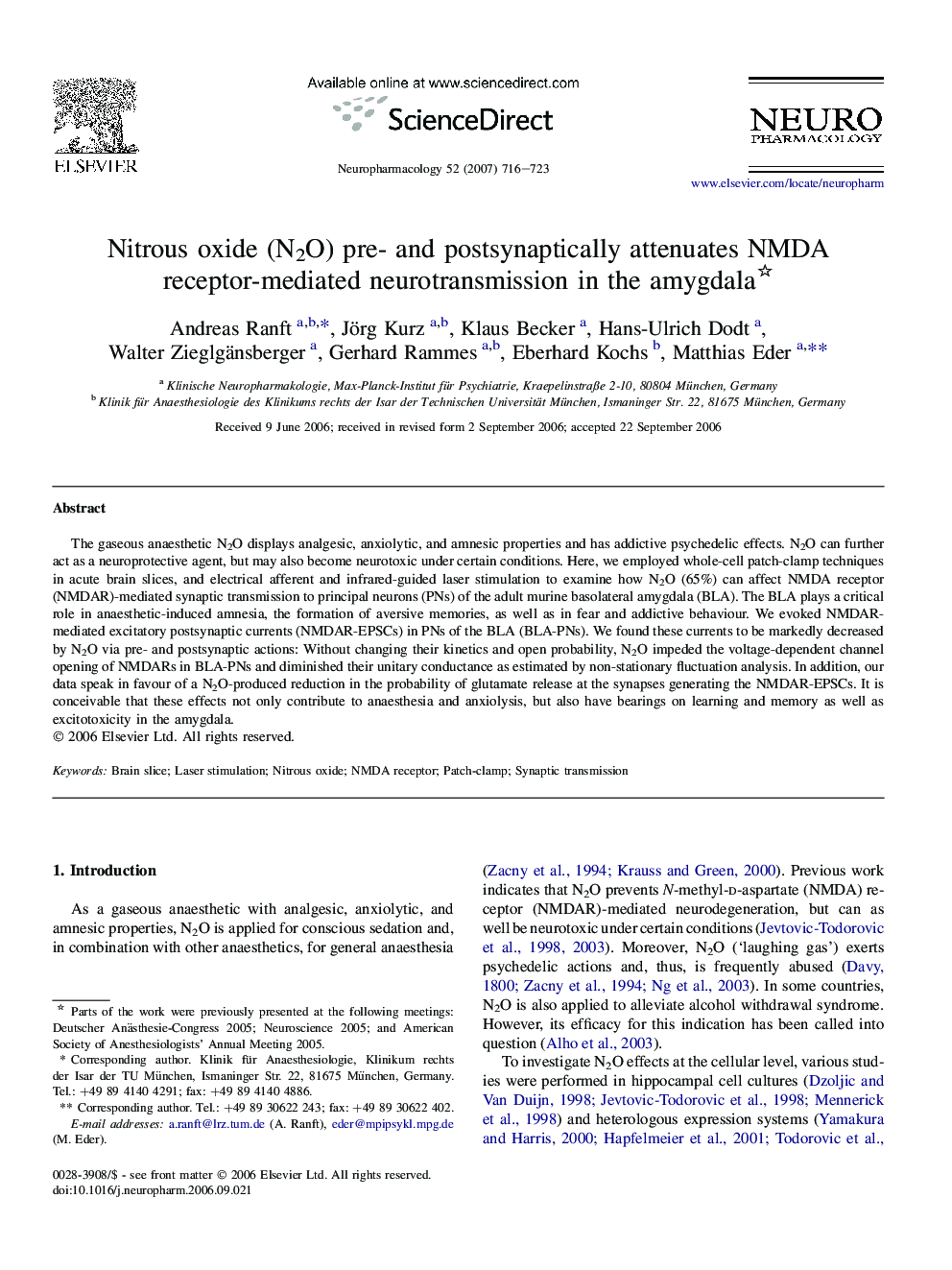| Article ID | Journal | Published Year | Pages | File Type |
|---|---|---|---|---|
| 2495305 | Neuropharmacology | 2007 | 8 Pages |
The gaseous anaesthetic N2O displays analgesic, anxiolytic, and amnesic properties and has addictive psychedelic effects. N2O can further act as a neuroprotective agent, but may also become neurotoxic under certain conditions. Here, we employed whole-cell patch-clamp techniques in acute brain slices, and electrical afferent and infrared-guided laser stimulation to examine how N2O (65%) can affect NMDA receptor (NMDAR)-mediated synaptic transmission to principal neurons (PNs) of the adult murine basolateral amygdala (BLA). The BLA plays a critical role in anaesthetic-induced amnesia, the formation of aversive memories, as well as in fear and addictive behaviour. We evoked NMDAR-mediated excitatory postsynaptic currents (NMDAR-EPSCs) in PNs of the BLA (BLA-PNs). We found these currents to be markedly decreased by N2O via pre- and postsynaptic actions: Without changing their kinetics and open probability, N2O impeded the voltage-dependent channel opening of NMDARs in BLA-PNs and diminished their unitary conductance as estimated by non-stationary fluctuation analysis. In addition, our data speak in favour of a N2O-produced reduction in the probability of glutamate release at the synapses generating the NMDAR-EPSCs. It is conceivable that these effects not only contribute to anaesthesia and anxiolysis, but also have bearings on learning and memory as well as excitotoxicity in the amygdala.
